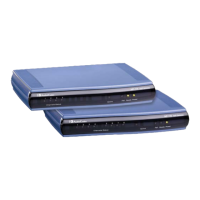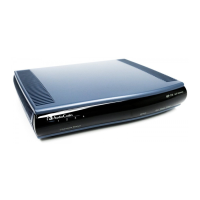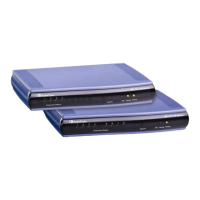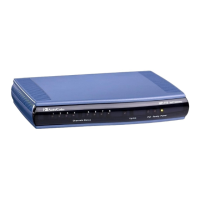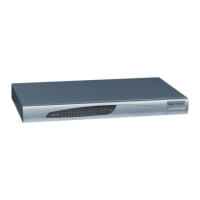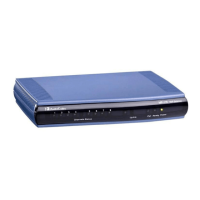SIP User's Manual 8 Document #: LTRT-65412
MP-11x & MP-124
9.9 Dynamic Jitter Buffer Operation ........................................................................... 414
9.10 Configuring Alternative Routing (Based on Connectivity and QoS) ..................... 416
9.10.1 Alternative Routing Mechanism ............................................................................ 416
9.10.2 Determining the Availability of Destination IP Addresses ..................................... 416
9.10.3 Relevant Parameters ............................................................................................ 416
9.11 Mapping PSTN Release Cause to SIP Response ............................................... 417
9.12 Supported RADIUS Att
ributes .............................................................................. 417
9.13 Call Detail Record
................................................................................................ 420
9.14 Querying Device Channel Resource
s using SIP OPTIONS ................................. 422
9.15 Working wit
h Supplementary Services ................................................................. 422
9.15.1 Call Hold and Retrieve .......................................................................................... 423
9.15.2 Call Pickup ............................................................................................................ 425
9.15.3 Consultation Feature ............................................................................................. 425
9.15.4 Call Transfer .......................................................................................................... 426
9.15.5 Call Forward .......................................................................................................... 427
9.15.6 Call Waiting ........................................................................................................... 427
9.15.7 Message Waiting Indication .................................................................................. 428
9.15.8 Caller ID ................................................................................................................ 429
9.15.8.1 Caller ID Detection / Generation on the Tel Side .................................. 429
9.15.8.2 Debugging a Caller ID Detection on FXO ............................................. 429
9.15.8.3 Caller ID on the IP Side ......................................................................... 430
9.15.9 Three-Way Conferencing ...................................................................................... 431
9.16 Proxy or Registrar Registration Example ............................................................. 433
9.17 SIP Call Flow Exa
mple ......................................................................................... 434
9.18 SIP Authentication Example
................................................................................. 436
9.19 Establishing
a Call between Two Devices ............................................................ 439
9.20 SIP Trunking between Enterprise an
d ITSPs ....................................................... 440
9.21 Remote PBX
Extension Between FXO and FXS Devices .................................... 444
9.21.1 Dialing from Remote Extension (Phone at FXS) .................................................. 445
9.21.2 Dialing from PBX Line or PSTN ............................................................................ 445
9.21.3 Message Waiting Indication for Remote Extensions ............................................ 445
9.21.4 Call Waiting for Remote Extensions ..................................................................... 446
9.21.5 FXS Gateway Configuration ................................................................................. 446
9.21.6 FXO Gateway Configuration ................................................................................. 448
10 Networking Capabilities ................................................................................. 449
10.1 Ethernet Interface Configuration .......................................................................... 449
10.2 NAT (Netwo
rk Address Translation) Support ....................................................... 450
10.2.1 STUN .................................................................................................................... 450
10.2.2 First Incoming Packet Mechanism ........................................................................ 451
10.2.3 No-Op Packets ...................................................................................................... 452
10.3 IP Multicasting ...................................................................................................... 452
10.4 Robust Receipt of RTP Streams
.......................................................................... 452
10.5 Multiple Routers Support
...................................................................................... 453
10.6 Simple Net
work Time Protocol Support ............................................................... 453
10.7 IP QoS
via Differentiated Services (DiffServ) ....................................................... 454
